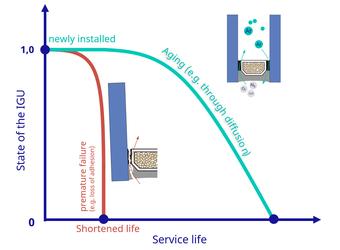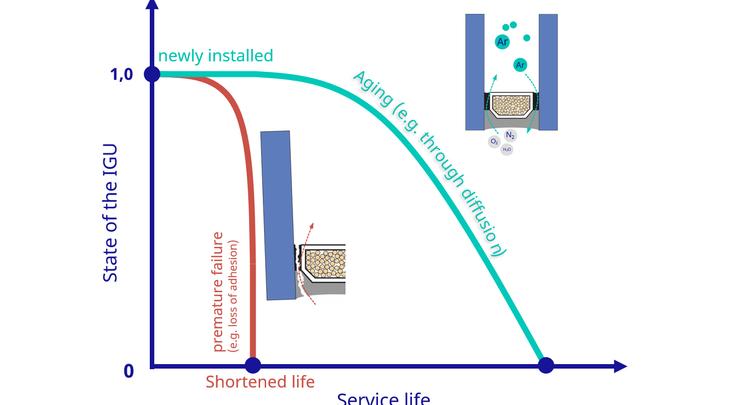Design for life


The most sustainable building is the one that is not built.
It has no operational carbon footprint, and it takes no resources and emissions (embodied carbon) to construct it. The next most sustainable building is the one that is renovated and repurposed, minimizing embodied carbon and reducing operational carbon emissions. However, sometimes buildings must be built. If they are, the most sustainable approach is to build small and build it to last. A building’s lifetime, and that of its components, is an often-overlooked driver of sustainable design.
Insulating glass units (IGUs) are a key component of a building envelope, adopted many decades ago to reduce operational energy use. According to Mic Patterson of the Façade Tectonics Institute, through this adoption we have turned a material with a 1000-year lifetime (single-pane glass) into one with a lifetime of 25 to 30 years. Embodied carbon has been traded off with reducing operational carbon emissions.
Since a 1000-year IGU has yet to be invented, and we need its operational energy efficiency, the immediate focus should be on maximizing the lifetime of conventional IGUs. Several factors affect an IGU’s lifetime:
• Edge seal material choice and design
• Quality of manufacturing
• Installation quality and conditions
• Climate stresses and other application-specific loads
Edge seal material choice is critical. Dual-seal polyisobutylene (PIB)/silicone systems are ubiquitous in commercial applications because of silicone’s water and UV resistance and structural strength. Because silicone does not provide a gas or vapor barrier, the choice of a high-quality spacer is especially important since it has no back-up. Ensuring excellent adhesion between silicone and spacer is also crucial to prevent failures due to water pooling next to the PIB, spacer movement (for flexible systems), and over-extension of the PIB. For these reasons, spacer with solid metal barriers – like aluminum, stainless-steel, and plastic hybrid stainless steel, box spacers – serve as the benchmark for IGU durability.
Quality of manufacturing can be managed by choosing fabricators who make IGUs under robust certification programs like the IGCC®/IGMA® and IGMAC programs. Using contractors certified through the North American Contractors Certification program can help support installation quality.
The impact of climate stress can also be mitigated with application specific edge seal analysis, although this is rarely done. Silicone contact width is always sized to prevent glass from falling off the building in structural glazing applications. Rarely is the silicone contact width sized to manage its strain, and the accompanying PIB elongation, caused by changes in IGU cavity pressure from temperature and barometric pressure changes, and by wind loads.
Water vapor and gas transmission increases with cross-sectional area of the PIB and with shortened path length, both of which happens when the PIB is stretched. The more elongation, the higher permeation, and higher risk of reduced service life. Small IGUs with thick lites, those with wide air gaps, or triple glazing are at highest risk for high edge loads. To support long service life, IGU configuration and silicone contact width should be designed routinely with a consideration of climate loads.

